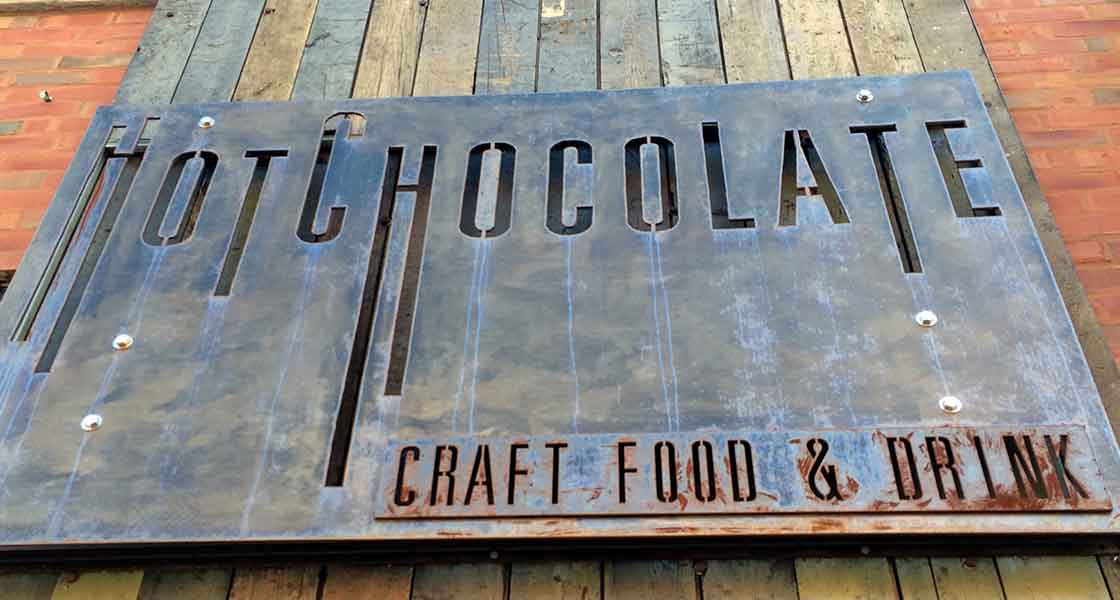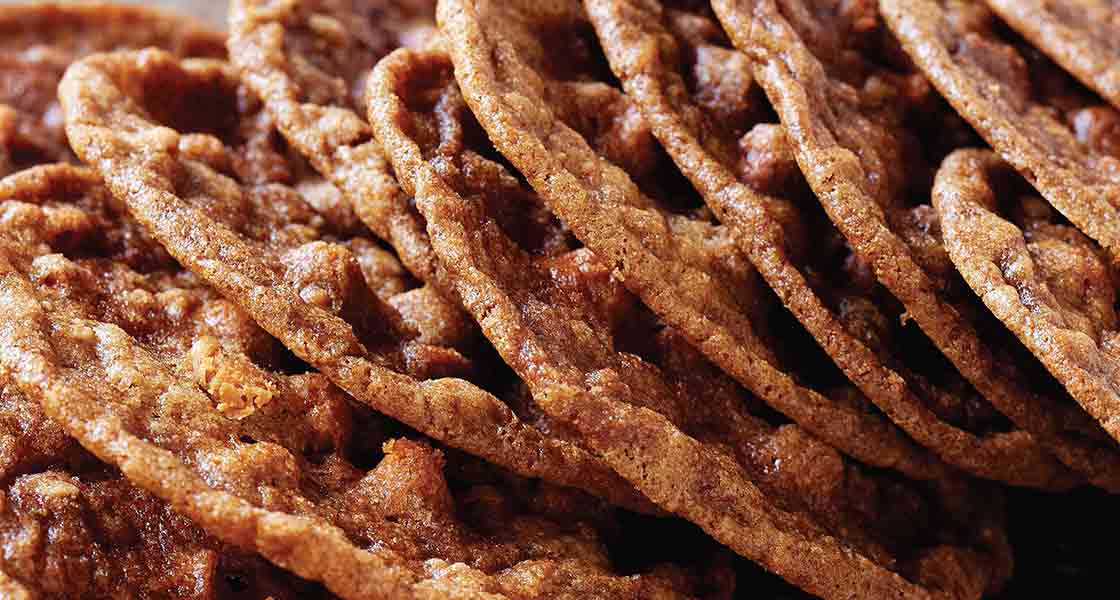Cannabis Meets Culinary
CULINARY POINT OF VIEW
Pastry Chef Mindy Segal is the owner of the acclaimed Mindy’s HotChocolate restaurant and dessert bar in Chicago, author of the bestselling Cookie Love cookbook, and winner of a James Beard Award. Now she brings her 30 years of culinary experience into the world of medical marijuana. In partnership with Cresco Labs, a cannabis grower and seller of medical marijuana products, Segal has developed a product line—including chocolate brittle bars and infused granola bites—to be distributed to licensed dispensaries. As one of the first chefs from the culinary world to enter the cannabis industry, Segal hopes to break down the stigma that surrounds marijuana.

Kelly Hensel: You’ve said that HotChocolate wasn’t really the type of restaurant that you initially wanted to open. How do you feel about it now—almost 11 years after opening?
Mindy Segal: I don’t know if that’s necessarily true. Initially, I wanted to open up a bakery but I don’t know anything about bakeries so that was out. And then I knew that I wanted to open up a dessert-focused restaurant. What that means is that the restaurant is owned by a pastry chef—which is unusual, so that’s what I did. I think it was very difficult for people to understand that I was a full-service restaurant because of the name. I still think people are confused, but obviously I’m doing something right because I’ve been open for 11 years.
Hensel: As someone who is dyslexic and learned to bake by watching Julia Child and looking at pictures in cookbooks, how did you approach writing your first cookbook—Cookie Love?
Segal: Well, I’m classically trained. I did go to culinary school, and I worked in some pretty decent kitchens. But when I was younger I did watch Julia Childs and look at a lot of books and magazines. I looked at the pictures and I kind of figured stuff out on my own, which is unusual for a pastry person.
I also had a very unusual way of writing my book. First of all, I had a food writer as a collaborator [Kate Leahy]. So, what I would do is go into the kitchen, write the recipes down, and then make them. I would make the adjustments and I would do that for about four or five recipes at a time. Then I would call my writer and I would dictate to her the recipes over the phone. I think what made it really good is that Kate got a chance to hear in my own words the method and why I did what I did and why I chose the recipe that I chose. She was able to really get into my head almost every day.
After taking down notes from our conversations, she would go into the kitchen and try to make the recipes from what I had told her. The process just really worked for us. It made the recipes that much better. Also, I had the woman who managed the studio where the photos for the book were taken make a large portion of the recipes. I really wanted the photographs to look like they weren’t done by a professional pastry shop.

Hensel: Why did you decide to get into the edibles business?
Segal: Well, I was approached by several people and it started to peak my curiosity. Then I had to take a very internal look at why I do what I do. And ask myself if it would fit into my value system of why I’m a chef and a business owner. I discovered and realized that the reason why I cook and the reason why I own a restaurant is really the same reason why I got into this industry. And that was to make people happy and to feed people and to make people feel good. That core value never really changed for me and it still hasn’t.
So I took a look at why I would be making edibles and then the same reason came up—it would be to make people feel good, make people happy, to help people enjoy their lives. I felt very comfortable making the decision to do it because my intentions were genuine.
My father and I did some research and we started thinking about it more in depth. That’s when we realized that it was not only in line with why I do what I do, but we also thought it was a lucrative move. And, to be honest with you, my product is stellar and what I’m going to be preparing is going to be stellar. I haven’t been this excited about an industry since the craft beer movement became really popular.
Hensel: What form of cannabis do you use for your recipes?
Segal: We’re using cannabis oil extractions. Cresco use a solvent to separate out the plant’s active ingredients before adding them to food. You wouldn’t know you were eating a marijuana brittle bar or granola bar or caramel unless you waited. There’s no marijuana taste or smell.
Hensel: You and Cresco are based in Illinois, which legalized medical marijuana use in 2013, but there are 22 other states and Washington DC where it is legal. Do you plan to license the products to other states right away?
Segal: Yes. I am selling in Illinois, Colorado, California, Seattle, and hopefully Portland, Ore.
Hensel: When will the products be available at medical marijuana dispensaries?
Segal: The product development is done, but we are still developing the brand. I expect by April they will be available.
Hensel: How and why did you select the products you are launching with?
Segal: Well, I had to consider the shelf life. I don’t want to do anything perishable unless they legalize edible bakeries where you can bake them fresh. I have actually been working on a line of regular [non-marijuana] brittles and granola bars, so we are just using product that I was already making. And they’re really good. I love the brittle. We are also going to have some caramels and some butterscotches—soft candies.
We are going to do micro-dosing for the recreational marijuana products. I really think micro-dosing is going to become the next cool thing in the industry. The idea is that you probably aren’t going to want to eat just one of my caramels or bars so by using a smaller dose in each, you could actually eat a couple.
Hensel: I imagine that is going to have to be very clearly labeled.
Segal: Yes, that’s why we are in the branding phase. Obviously the quality of the product is important but the branding and labeling are really, really important.
Hensel: Where do you see the medical marijuana, and specifically edibles, industry headed?
Segal: I truly believe that the U.S. government has to change marijuana distribution and take it off Schedule 1 [of the Controlled Substances Act—a classification reserved for drugs considered to have no medical value]. Once they do that, it will open up a lot of federal funding and acceptance. I am really lobbying on behalf of this.
Hensel: Do you think that other chefs are going to enter the edibles business?
Segal: I can’t imagine why they wouldn’t. I really don’t know why no one else has come forward but, hey, I was the first—hopefully a trendsetter.

Oatmeal Scotchies
excerpted from Cookie Love
There is one cookie that I cannot make: oatmeal raisin. When I was in culinary school, I spent a week trying to produce the perfect oatmeal raisin cookie. I was on a quest to make it flat and crisp, but it never worked out. The raisins always dried out or the cookies turned flabby. I finally set this cookie aside and moved on.
Yet two sources of inspiration drove me to revisit the oatmeal-cookie category. Three Sisters Garden in Kankakee, Ill., sells unhulled oats that look like barley malt and I wanted to highlight these special oats in a cookie. Then along came my second source of inspiration. Luke LeFiles, a Carolina boy, managed the bar at Hot Chocolate for years. He constantly put in requests for oatmeal scotchies, the butterscotch-filled chewy cookies he remembered from home. One day I realized that swapping out raisins in exchange for butterscotch would solve my flabby oatmeal cookie problem: The butterscotch complemented the oats, and the batter baked like an oatmeal lace cookie.
Whether you have unhulled oats from a farm or old-fashioned oats from the grocery store, toasting oats before baking them draws out the flavor. I take a small amount of the toasted oats and grind them in a spice grinder to enhance the cookie’s delicate texture. For a variation of this recipe, use shards of toffee in place of butterscotch chips.
Makes approximately 42 cookies
Ingredients:
- 1 cup plus 2 tbsp old-fashioned oats
- 1 cup (8 oz) unsalted butter, at room temperature
- ½ cup cane sugar
- ½ cup firmly packed light brown sugar
- ½ cup firmly packed dark brown sugar
- 1 extra-large egg, at room temperature
- 1 tsp pure vanilla extract
- ½ cup cake flour
- ½ cup unbleached all-purpose flour
- 1 ½ tsp baking soda
- 1 tsp kosher salt
- 1 tsp sea salt flakes
- 1 cup (6 oz) butterscotch chips
Method:
- Heat the oven to 350°F and line a couple of half sheet (13 x18-inch) pans with parchment paper.
- Spread the oats across a third half sheet pan and toast lightly until the oats smell like cooked oatmeal, approximately 5 min. (Keep the oven on for the cookies.) Let cool. In a spice grinder, grind 2 tbsp of the oats into a fine powder.
- In the bowl of a stand mixer fitted with the paddle attachment, mix the butter briefly on medium speed for 5 to 10 sec. Add the sugars and beat until the butter mixture is aerated and pale in color, approximately 4 min. Scrape the sides and bottom of the bowl with a rubber spatula to bring the batter together.
- Crack the egg into a small cup or bowl and add the vanilla.
- Place the powdered and whole oats, flours, baking soda, and salts in a bowl and whisk to combine. Add the butterscotch chips and stir until lightly coated in flour.
- On medium speed, add the egg and vanilla to the butter mixture and mix until the batter resembles cottage cheese, approximately 5 sec. With a rubber spatula, scrape the sides and bottom of the bowl to bring the batter together. Mix on medium speed for another 20 sec to make nearly homogeneous.
- Add the dry ingredients all at once and mix on low speed until the batter comes together but still looks shaggy, approximately 30 sec. Do not overmix. Remove the bowl from the stand mixer. With a plastic bench scraper, bring the dough completely together by hand.
- Portion the dough into 8 mounds using a ¾-oz (1 ½ tbsp) ice cream scoop and evenly distribute onto a prepared sheet pan. (The cookies will spread significantly as they bake.)
- Bake for 8 min. Give the pan a sturdy tap against the counter or the oven to deflate the cookies. Rotate the pan and continue to bake until the edges are a deep golden brown, the centers have fallen, and the cookies are beginning to crisp and brown, another 4 to 6 min. (Do not underbake or the cookies won’t crisp up when they cool.) Let the cookies cool completely on the pan. Repeat with the remaining dough.
- The cookies can be stored in an airtight container at room temperature for up to 3 days. The cookies are best when baked the day the dough is made.


